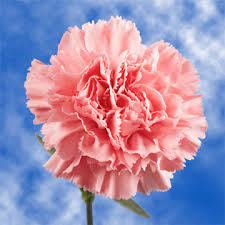Floriography
- UnEarthed
- Aug 27, 2019
- 2 min read
Updated: Feb 12, 2020
By Shunmel Syau
If you ever decide a bouquet of carnations would be a lovely gift for someone, make sure to avoid the yellow ones (unless you’re subtly throwing shade). Flowers are more than just a dinner table decoration or popular celebration present; they were once used as a way to express emotions and convey covert messages.
Floriography is the language of flowers. Meanings are associated with each flower, which could change based on its color or the composition of the bouquet.
In the 19th century in Europe—think Victorian Ages—floriography gained popularity. At a time when society was dictated by many strict rules and regulations, flowers allowed people to communicate in a way that would be frowned upon in polite company. This trend was brought to England by Lady Mary Wortley Montagu. She had been residing in Constinopole and was writing letters to home; in these, she had talked about a secret flower language used by women. When her letters were published, it eventually led to the circulation of books and dictionaries about the language of flowers in both Europe and the United States.
While floriography can be considered an obscure hobby today (I guess we prefer sending risky texts rather than risky bouquets), it is still useful in literature and art. Famous writers like William Shakespeare (check out Hamlet) and well-known artists like Dante Gabriel Rossetti used flowers in their works for symbolic purposes.
There are also other relevant uses of floriography today. There are still shops today that sell bouquets based on the constituents’ meanings, like Bloom & Wild. Floral arrangement is also big in Japan. It’s an art form called ikebana and follows hanakotoba, which is the Japanese version of the language of flowers.
Plus, this is just a pretty cool thing to know! Here are possible meanings of some common flowers:
- Buttercup: childishness

- Carnation
Red: admiration
White: sweet, lovely, innocence, pure love, adoration
Purple: capriciousness
Pink: I’ll never forget you
Striped: rejection
Yellow: disappointment, rejection
- Chrysanthemum
Red: I love you
White: truth
Yellow: slighted love
- Daisy: loyal love, gentleness, innocence

- Hibiscus: delicate beauty

- Lavender: loyalty, love, devotion

- Orchid: love, beauty

- Rose
Red: love, I love you, desire
Pink: perfect happiness
Yellow: friendship, joy, gladness
White: charm, innocence
Sources:
3. https://londonflowerschool.com/journal/floriography-the-victorian-art-of-speaking-through-flowers
Editor: Jo Ann Sun





























Comments